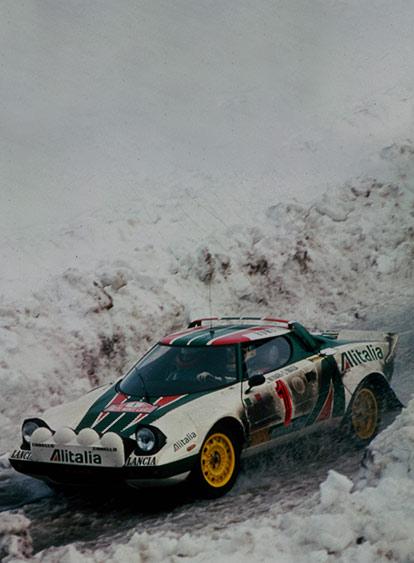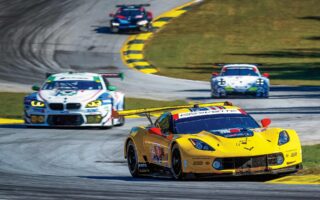In the world of motorsport, few names evoke the same sense of nostalgia and excitement as Lancia. Renowned for their distinctive Italian design and engineering prowess, Lancia has carved out a legendary niche in the annals of rally racing. The rally car segment, characterized by its rugged endurance and high-octane thrills, has seen countless contenders, but Lancia’s offerings stand out as icons of a bygone era. From the groundbreaking Lancia Stratos, which dominated the World Rally Championship in the 1970s, to the formidable Delta Integrale, a car that became synonymous with success in the ’80s and ’90s, Lancia’s rally lineage is rich with innovation and triumph. In this article, we will delve into the history, design, and enduring legacy of Lancia rally cars, exploring how they continue to inspire both enthusiasts and engineers alike in the ever-evolving landscape of motorsport.
Table of Contents
- Exploring the Legacy of Lancia Rally Cars in Motorsport History
- Performance Engineering: What Makes Lancia Rally Engines Exceptional
- Design Innovations in Lancia Rally Cars That Changed the Game
- Tips for Collectors: Maintaining and Restoring Classic Lancia Rally Models
- Q&A
- The Conclusion
Exploring the Legacy of Lancia Rally Cars in Motorsport History
The legacy of Lancia’s rally cars can be seen in their groundbreaking engineering, innovative design, and the indelible mark they left on rallying history. From the iconic Lancia Stratos to the formidable Lancia Delta Integrale, these cars were not merely performers; they were revolutionaries. Each model brought technical advancements and daring aesthetics that pushed the boundaries of what was possible in motorsport. The Stratos, for instance, was the first true rally car to be built specifically for the sport, leveraging a mid-engine layout and a lightweight chassis, which not only set it apart from its predecessors but also garnered numerous championship titles in the early 1970s.
The Lancia Delta Integrale further solidified the brand’s dominance in the World Rally Championship, capturing six consecutive manufacturers’ titles from 1987 to 1992. This success can be attributed to its advanced turbocharged engine and all-wheel-drive system, which offered exceptional handling and performance on diverse terrains. Rally enthusiasts cherish these cars not just for their speed but also for their rich heritage, which includes a roster of legendary drivers like Miki Biasion and Juha Kankkunen. Their achievements serve as a testament to Lancia’s engineering prowess and commitment to excellence in the world of motorsport. Below is a brief overview of Lancia’s most iconic rally cars:
| Model | Year Launched | Championship Titles |
|---|---|---|
| Lancia Stratos | 1972 | 3 |
| Lancia 037 | 1982 | 1 |
| Lancia Delta S4 | 1985 | 0 |
| Lancia Delta Integrale | 1987 | 6 |
Performance Engineering: What Makes Lancia Rally Engines Exceptional
When discussing the exceptional nature of Lancia rally engines, it’s essential to recognize the innovative engineering and craftsmanship that define their construction. Lancia has a long-standing legacy in motorsports, particularly in rallying, where their vehicles often outpace the competition due to several key characteristics:
- Turbos and Performance: Lancia engines frequently incorporate turbocharging, allowing for increased power output and efficiency, crucial in the demanding environments of rally racing.
- Lightweight Designs: Utilizing advanced materials, these engines are not only powerful but also lightweight, enhancing the overall handling and agility of the cars.
- Advanced Cooling Systems: Rally engines are faced with extreme conditions; thus, Lancia integrates sophisticated cooling solutions to maintain optimal operating temperatures, ensuring reliability and durability.
Moreover, the tuning capabilities of Lancia rally engines are remarkable, allowing teams to customize their setups for specific rally conditions. This adaptability is often achieved through:
| Feature | Benefit |
|---|---|
| Adjustable Boost Levels | Enhances performance based on race-specific requirements. |
| Electronic Engine Management | Optimizes fuel efficiency and power delivery under varying conditions. |
| Custom Exhaust Systems | Improves engine airflow and reduces turbo lag for quick acceleration. |
Design Innovations in Lancia Rally Cars That Changed the Game
The evolution of Lancia rally cars has been marked by a series of groundbreaking design innovations that redefined the standards of performance and safety in motorsport. One of the most notable advancements was the introduction of advanced aerodynamics, which played a crucial role in balancing speed and stability at high velocities. Lancia’s engineers meticulously crafted body shapes that minimized drag, while strategically positioned spoilers enhanced downforce. As a result, these cars not only navigated tight corners with exceptional grace but also maintained remarkable control on various terrains. Key features included:
- Lightweight chassis: Utilizing high-strength materials reduced overall weight without compromising structural integrity.
- All-wheel drive systems: Enhanced traction provided by innovative drivetrain configurations, ensuring superior grip on slippery surfaces.
- Innovative suspension: A blend of macpherson struts and multi-link systems allowed for improved handling and comfort on uneven roads.
Additionally, Lancia revolutionized the cockpit design by prioritizing driver ergonomics and accessibility of controls. The layout was engineered to allow for quick adjustments while maintaining focus on the race. Instrumentation was advanced, offering real-time data that enhanced situational awareness during intense competition. To illustrate the impact of these innovations on performance, the following table highlights the key models and their attributes:
| Model | Year | Turbocharged | Weight (kg) |
|---|---|---|---|
| Stratos HF | 1974 | Yes | 880 |
| 037 | 1982 | No | 960 |
| Delta S4 | 1985 | Yes | 890 |
Tips for Collectors: Maintaining and Restoring Classic Lancia Rally Models
Maintaining classic Lancia rally models requires a keen eye for detail and a commitment to preserving the essence of these iconic vehicles. To keep your Lancia in peak condition, consider the following tips:
- Regular Inspections: Schedule frequent checks on key components like the suspension, brakes, and engine. Look for signs of wear and tear that may require immediate attention.
- Use Authentic Parts: When restoring, always opt for original or reproduction parts that match the vehicle’s specifications. This keeps the car authentic and retains its value.
- Proper Storage: Keep your rally model in a dry, temperature-controlled environment to prevent rust and degradation. A cover can further protect the paint and interior.
Restoration can be a rewarding journey, but it is essential to approach it with care and knowledge. Here are additional considerations:
- Document Your Restoration: Keep a detailed log of all work done, including receipts and photographs. This documentation is invaluable for future reference and can enhance the car’s provenance.
- Join a Community: Engaging with fellow collectors and enthusiasts can provide you with vital tips, resources, and potential leads on parts and refurbishment specialists.
| Restoration Aspect | Recommended Action |
|---|---|
| Bodywork | Seek professional help for structural repairs; ensure original paint codes are used. |
| Engine | Consider a rebuild if mileage surpasses 100,000 km; check for oil leaks regularly. |
| Interior | Avoid modern fabrics; restore using period-appropriate materials for authenticity. |
Q&A
Q&A: The Legacy of Lancia Rally Cars
Q1: What makes Lancia rally cars unique in the world of motorsport?
A1: Lancia rally cars are celebrated not just for their performance but also for their innovative engineering, iconic designs, and profound impact on the World Rally Championship (WRC). Their unique combination of lightweight construction, advanced suspension systems, and powerful engines have distinguished them as formidable competitors. Lancia’s commitment to rally success is epitomized by cars like the Lancia Stratos, which not only dominated the tracks but also captured the imaginations of fans worldwide.
Q2: Can you tell us about the history of Lancia’s involvement in rally racing?
A2: Lancia’s rallying story began in the late 1950s, but it was in the 1970s that they truly made their mark. The Lancia Stratos, introduced in 1972, won the World Rally Championship in 1974, 1975, and 1976, showcasing the company’s relentless pursuit of performance. Over the years, models like the Lancia 037 and the Delta S4 followed, leading Lancia to secure multiple championship titles throughout the 1980s, cementing its status as one of the most successful manufacturers in rallying history.
Q3: What are some of the most iconic Lancia rally cars?
A3: Among the pantheon of Lancia rally cars, the Lancia Stratos is perhaps the most iconic, not only for its success but also for its distinctive wedge-shaped design. Following in its footsteps was the Lancia 037, the last rear-wheel-drive car to win the WRC, and the legendary Delta Integrale, renowned for its all-wheel-drive system and continuous victories throughout the late 1980s and early 1990s. Each of these models has become a symbol of innovation and rally prowess.
Q4: How did Lancia contribute to the evolution of rally car design and technology?
A4: Lancia has been a pioneer in adopting and developing cutting-edge technologies for rally cars. They were among the first to use turbocharged engines in their vehicles, which provided significant power boosts. The introduction of all-wheel-drive systems in the Delta Integrale revolutionized grip and handling, setting new standards for rally car design. Additionally, their use of lightweight materials and aerodynamic shapes has influenced the design philosophies of many manufacturers in the years to come.
Q5: What is the current state of Lancia in motorsport and rallying?
A5: While Lancia no longer competes in the WRC, the brand still holds a revered place in motorsport history. Enthusiasts continue to celebrate Lancia’s rally legacy, and vintage events often feature classic Lancia rally cars. The iconic blue and white livery and the passion surrounding the brand keep its spirit alive, highlighted by clubs and communities that cherish these vehicles. As for modern motorsport endeavors, Lancia has shifted focus towards commercial production, but the allure of its rally heritage remains strong.
Q6: Why do rally fans hold Lancia in such high regard?
A6: Lancia’s rally cars evoke a sense of nostalgia and admiration, stemming from their remarkable records and striking aesthetics. Fans appreciate the brand’s adventurous spirit and edge-of-your-seat performances, often recalling legendary moments from past rally seasons. Moreover, Lancia’s contribution to rallying as a sport has fostered a deep emotional connection, with their success stories becoming ingrained in rally folklore, thus ensuring their legendary status continues to resonate with fans around the globe.
The Conclusion
As we shift gears and bring this exploration of Lancia rally cars to a close, it’s clear that these remarkable machines embody more than just engineering excellence; they represent an enduring legacy in the world of motorsport. From the iconic Lancia Stratos, which redefined the very notion of rally racing, to the modern interpretations that continue to pay homage to its storied past, Lancia rally cars have left an indelible mark on both the dirt and the asphalt. Their unique blend of power, precision, and passion captures the essence of rallying, inviting enthusiasts and newcomers alike into a thrilling adventure. As we look to the future of motorsports, one can only wonder what new chapters await in the ever-evolving story of Lancia and its illustrious rally heritage. Whether you’re a seasoned fan or just curious to learn more, the roar of a Lancia rally car will always evoke the spirit of the rally stage—wild, untamed, and beautifully exhilarating.



